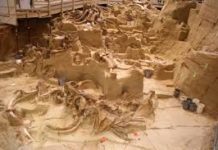This week, Neil Gemmell, who is a professor at the University of Otago in New Zealand, announced the findings of his long-term environmental DNA investigation of the famous Loch Ness in Scotland. Professor Gemmell took multiple water samples from all portions of the Loch so that he could analyze the DNA fragments. The goal was to find out what species have lived in the Loch over the course of its existence. Many were wanting to know if the scientist would find evidence of the Loch Ness Monster.
Professor Gemmell announced this week that he found DNA evidence of many different species in Loch Ness, but he found absolutely no evidence that there were ever any reptilian or dinosaur type creatures in the Loch. Some had speculated for years that the Loch Ness Monster was a plesiosaur. However, Professor Gemmell found no DNA evidence of this type of dinosaur. He also did not find any DNA evidence that large catfish, sturgeon or sharks occupied Loch Ness at any time. These are some other creatures that scientists believed may have led to the belief in the Loch Ness Monster.
Professor Gemmell did find DNA evidence of many eels living in the Loch. He speculated that it may be possible that sightings of the Loch Ness Monster are actually very large eels living in the Loch. However, European eels usually only grow to a size of around 12 pounds making it doubtful that one would be mistaken for a monster.
Even though the Loch Ness Monster myth was the media framework around Professor Gemmell’s study, he was actually performing important environmental testing. Scientists hope to use the type of DNA testing Gemmell was using to study marine animals. The hope is that DNA water sampling can eventually provide a lot of information about animals in the water without scientists having to disturb the animals or significantly disrupt the animals’ habitat.






